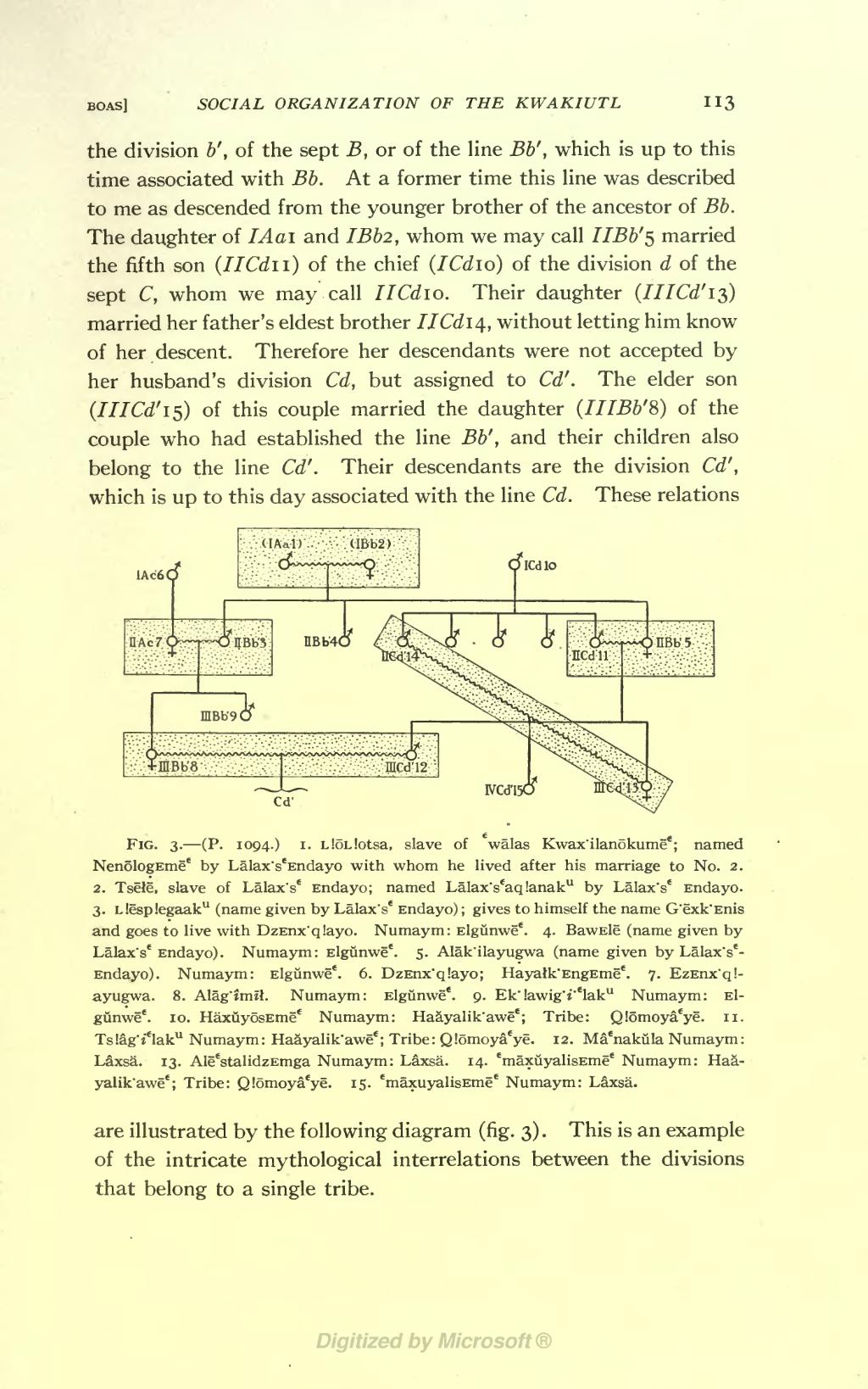BOAS]
��SOCIAL ORGANIZATION OF THE KWAKIUTL
��113
��the division b' ', of the sept B, or of the line Bb f , which is up to this time associated with Bb. At a former time this line was described to me as descended from the younger brother of the ancestor of Bb. The daughter of I A a i and IBb2, whom we may call IIBb'$ married the fifth son (IlCdn) of the chief (ICdio) of the division d of the sept C, whom we may call IlCdio. Their daughter (IUCd'i^) married her father's eldest brother HCd\\, without letting him know of her descent. Therefore her descendants were not accepted by her husband's division Cd, but assigned to Cd f . The elder son (IUCd'i^) of this couple married the daughter (IIIBb'S) of the couple who had established the line Bb', and their children also belong to the line Cd' . Their descendants are the division Cd', which is up to this day associated with the line Cd. These relations
��lAc'6
���Cd'
��FIG. 3. (P. 1094.) i. LloLlotsa, slave of walas Kwax'ilanokume*; named NenologEme* by Lalax's 6 Endayo with whom he lived after his marriage to No. 2.
2. Tsele, slave of Lalax's* Endayo; named Lalax's 6 aq !anak u by Lalax's' Endayo.
3. L !esp !egaak u (name given by Lalax's* Endayo) ; gives to himself the name G'exk'Enis and goes to live with DzEnx'qlayo. Numaym: Elgunwe 6 . 4. BawEle (name given by Lalax's* Endayo). Numaym: Elgunwe 6 . 5. Alak'ilayugwa (name given by Lalax's 6 - Endayo). Numaym: Elgunwe'. 6. DzEnx'qlayo; Hayalk'EngEme e . 7. EzEnx'q!- ayugwa. 8. Alag'trml. Numaym: Elgunwe'. 9. Ek' !awig'i' e lak u Numaym: El- gunwe*. 10. HaxuyosEme 6 Numaym: Haayalik'awe 6 ; Tribe: Qlomoya'ye. n. Ts!ag'i*lak u Numaym: Haayalik' awe* ; Tribe: Q!omoya e ye. 12. Ma'nakula Numaym: Laxsa. 13. Ale'stalidzEmga Numaym: Laxsa. 14. e maxuyalisEme' Numaym: Haa- yalik'awe 4 ; Tribe: Q!omoya e ye. 15. e maxuyalisEme e Numaym: Laxsa.
are illustrated by the following diagram (fig. 3) . This is an example of the intricate mythological interrelations between the divisions that belong to a single tribe.
�� �
